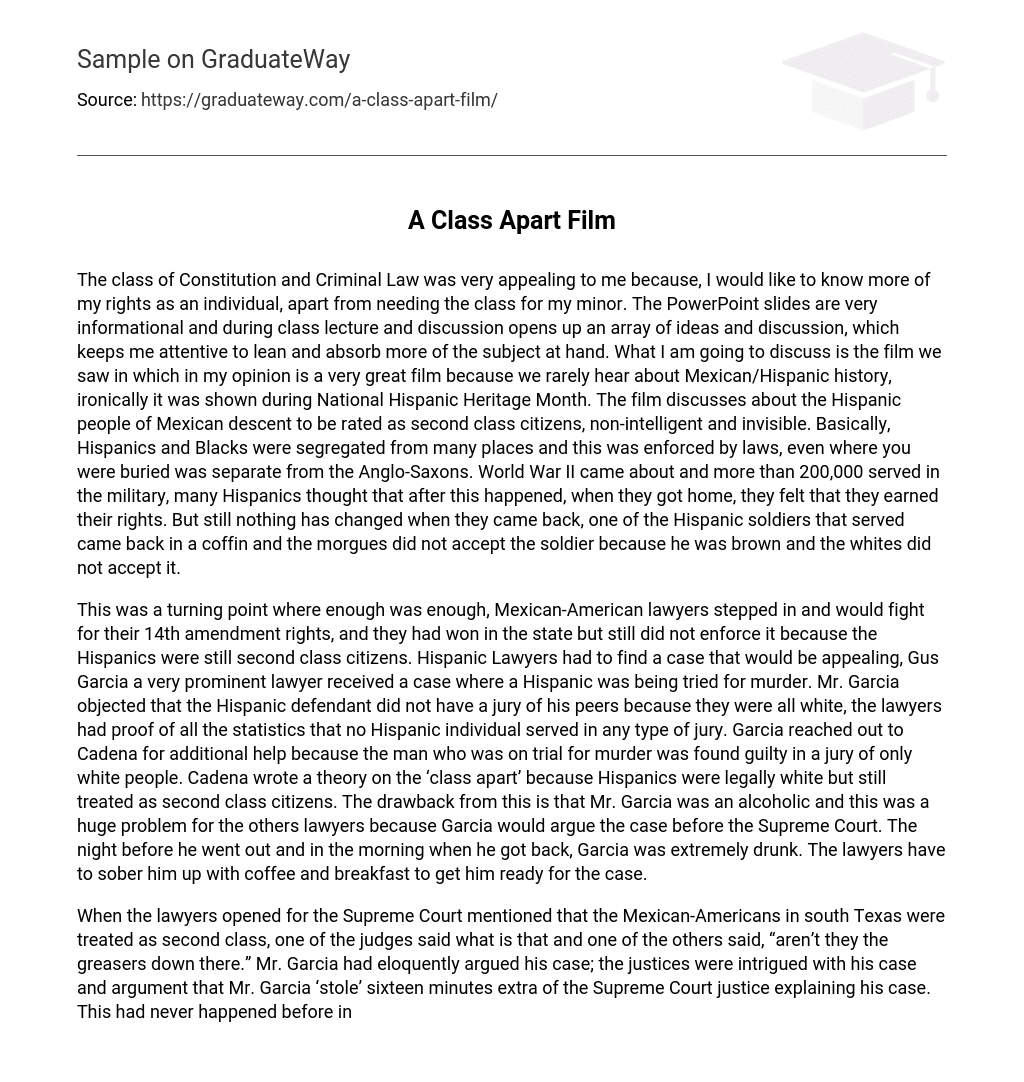The class of Constitution and Criminal Law piqued my interest because I wanted to learn more about my rights as an individual, in addition to needing the class for my minor. The PowerPoint slides provided informative content, and the class lectures and discussions sparked various ideas and conversations, helping me stay engaged and absorb more of the subject matter. I would like to discuss the film we watched, which I believe is excellent because it sheds light on Mexican/Hispanic history, particularly during National Hispanic Heritage Month. The film delves into the treatment of Hispanic people of Mexican descent as second-class citizens, viewed as unintelligent and overlooked. They faced segregation from various establishments, with even their burial grounds separated from Anglo-Saxons. Despite over 200,000 Hispanics serving in World War II, many believed that their service would earn them their rights upon returning home. However, little changed when they came back – one Hispanic soldier even returned in a coffin, but the morgues refused to accept him due to his brown skin, epitomizing the discrimination they faced.
This paragraph marks a significant turning point for Mexican-American rights. Determined Hispanic lawyers fought for their 14th amendment rights, achieving victory at the state level. However, despite this success, Hispanics remained second-class citizens in practice. This disparity spurred Latino lawyers to seek a compelling case to address the issue. One such case came to the attention of Gus Garcia, a highly esteemed attorney. Garcia contended that the Hispanic defendant, facing a murder charge, did not receive a fair trial as the jury consisted solely of white individuals. The legal team presented an array of statistics indicating the absence of Hispanic jurors in any trials. Recognizing the importance of the case, Garcia sought the assistance of Cadena. The convicted murderer’s case was particularly significant as it highlighted the distinction between Hispanics who were legally classified as white but were still treated as a marginalized group. However, one impediment arose—Mr. Garcia battled alcoholism. This posed a considerable problem for his peers as he was slated to argue the case before the Supreme Court. On the eve of the trial, Garcia indulged in heavy drinking, causing great concern among his colleagues. To ensure his readiness for court, they had to sober him up by providing him with coffee and breakfast in the morning.
During the Supreme Court proceedings, lawyers raised concerns about the mistreatment of Mexican-Americans in south Texas, depicting them as second-class citizens. One judge sought clarification on this issue, while another disrespectfully referred to them as “greasers.” Mr. Garcia delivered a captivating argument that fascinated the Supreme Court justices. What made his case noteworthy was that he took sixteen minutes longer than usual to present it. This unprecedented situation created anticipation as they awaited the justices’ decision, which ultimately concluded that there had been bias in the Texas courts. Consequently, the murder suspect’s conviction was overturned and a new trial became necessary. Sadly, Mr. Garcia’s life descended into turmoil due to alcoholism, leading to his premature death. On a positive note, Mr. Cadena went on to become chief justice at the court of appeals.





